Amit Pande
GRAINRec: Graph and Attention Integrated Approach for Real-Time Session-Based Item Recommendations
Nov 14, 2024
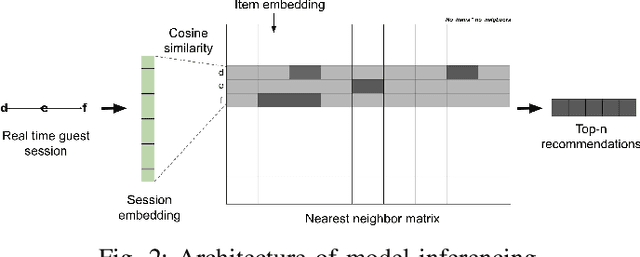
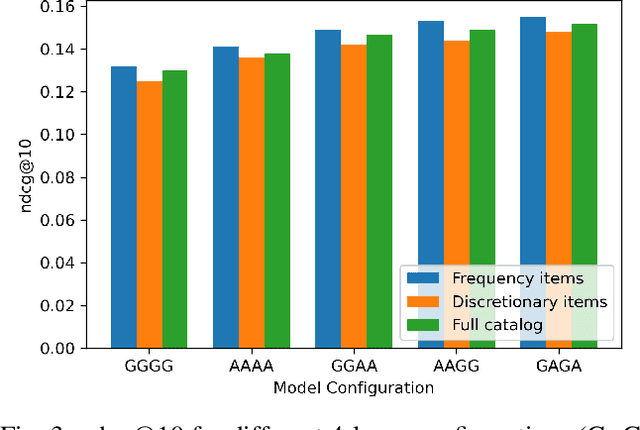
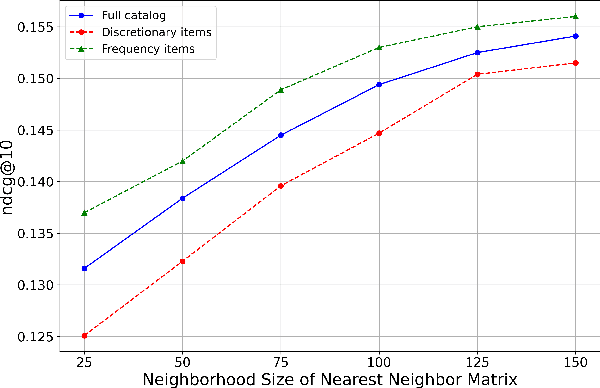
Abstract:Recent advancements in session-based recommendation models using deep learning techniques have demonstrated significant performance improvements. While they can enhance model sophistication and improve the relevance of recommendations, they also make it challenging to implement a scalable real-time solution. To addressing this challenge, we propose GRAINRec: a Graph and Attention Integrated session-based recommendation model that generates recommendations in real-time. Our scope of work is item recommendations in online retail where a session is defined as an ordered sequence of digital guest actions, such as page views or adds to cart. The proposed model generates recommendations by considering the importance of all items in the session together, letting us predict relevant recommendations dynamically as the session evolves. We also propose a heuristic approach to implement real-time inferencing that meets Target platform's service level agreement (SLA). The proposed architecture lets us predict relevant recommendations dynamically as the session evolves, rather than relying on pre-computed recommendations for each item. Evaluation results of the proposed model show an average improvement of 1.5% across all offline evaluation metrics. A/B tests done over a 2 week duration showed an increase of 10% in click through rate and 9% increase in attributable demand. Extensive ablation studies are also done to understand our model performance for different parameters.
Personalized Category Frequency prediction for Buy It Again recommendations
Jul 24, 2023Abstract:Buy It Again (BIA) recommendations are crucial to retailers to help improve user experience and site engagement by suggesting items that customers are likely to buy again based on their own repeat purchasing patterns. Most existing BIA studies analyze guests personalized behavior at item granularity. A category-based model may be more appropriate in such scenarios. We propose a recommendation system called a hierarchical PCIC model that consists of a personalized category model (PC model) and a personalized item model within categories (IC model). PC model generates a personalized list of categories that customers are likely to purchase again. IC model ranks items within categories that guests are likely to consume within a category. The hierarchical PCIC model captures the general consumption rate of products using survival models. Trends in consumption are captured using time series models. Features derived from these models are used in training a category-grained neural network. We compare PCIC to twelve existing baselines on four standard open datasets. PCIC improves NDCG up to 16 percent while improving recall by around 2 percent. We were able to scale and train (over 8 hours) PCIC on a large dataset of 100M guests and 3M items where repeat categories of a guest out number repeat items. PCIC was deployed and AB tested on the site of a major retailer, leading to significant gains in guest engagement.
An Opportunistic Bandit Approach for User Interface Experimentation
Jun 21, 2020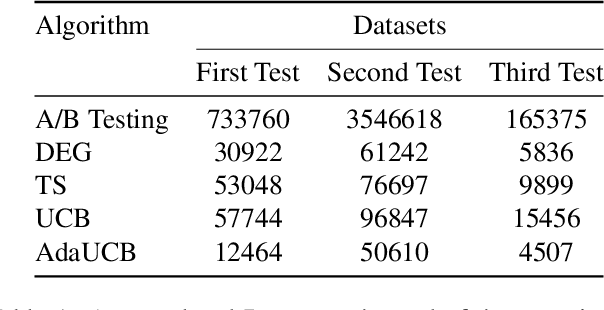


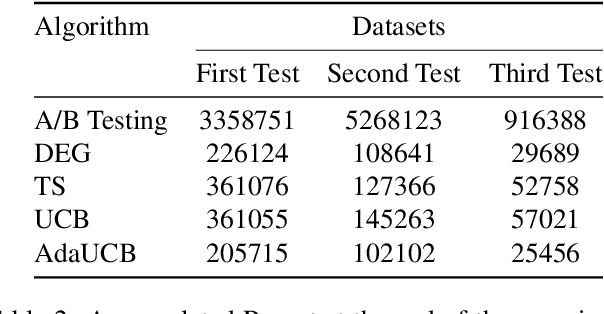
Abstract:Facing growing competition from online rivals, the retail industry is increasingly investing in their online shopping platforms to win the high-stake battle of customer' loyalty. User experience is playing an essential role in this competition, and retailers are continuously experimenting and optimizing their user interface for better user experience. The cost of experimentation is dominated by the opportunity cost of providing a suboptimal service to the customers. Through this paper, we demonstrate the effectiveness of opportunistic bandits to make the experiments as inexpensive as possible using real online retail data. In fact, we model user interface experimentation as an opportunistic bandit problem, in which the cost of exploration varies under a factor extracted from customer features. We achieve significant regret reduction by mitigating costly exploration and providing extra contextual information that helps to guide the testing process. Moreover, we analyze the advantages and challenges of using opportunistic bandits for online retail experimentation.
SWAG: Item Recommendations using Convolutions on Weighted Graphs
Nov 22, 2019


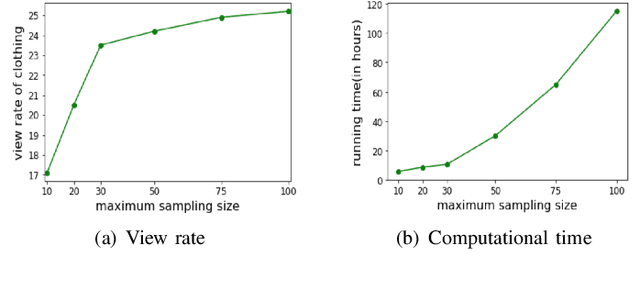
Abstract:Recent advancements in deep neural networks for graph-structured data have led to state-of-the-art performance on recommender system benchmarks. In this work, we present a Graph Convolutional Network (GCN) algorithm SWAG (Sample Weight and AGgregate), which combines efficient random walks and graph convolutions on weighted graphs to generate embeddings for nodes (items) that incorporate both graph structure as well as node feature information such as item-descriptions and item-images. The three important SWAG operations that enable us to efficiently generate node embeddings based on graph structures are (a) Sampling of graph to homogeneous structure, (b) Weighting the sampling, walks and convolution operations, and (c) using AGgregation functions for generating convolutions. The work is an adaptation of graphSAGE over weighted graphs. We deploy SWAG at Target and train it on a graph of more than 500K products sold online with over 50M edges. Offline and online evaluations reveal the benefit of using a graph-based approach and the benefits of weighing to produce high quality embeddings and product recommendations.
 Add to Chrome
Add to Chrome Add to Firefox
Add to Firefox Add to Edge
Add to Edge